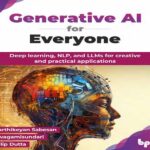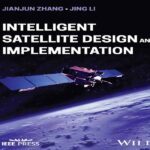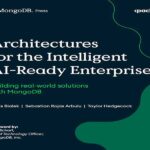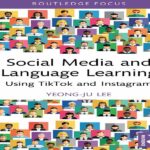- عنوان کتاب: Generative AI for Everyone -Deep learning, NLP, LLMs f creative practical applications
- نویسنده: Sabesan, Karthikeyan Sivagamisundari Dutta
- حوزه: هوش مصنوعی مولد
- سال انتشار: 2025
- تعداد صفحه: 312
- زبان اصلی: انگلیسی
- نوع فایل: pdf
- حجم فایل: 10.5 مگابایت
هوش مصنوعی مولد، شاخهای از هوش مصنوعی، در سالهای اخیر پیشرفتهای چشمگیری داشته است. این پیشرفتها کاربردهای متنوعی از جمله ایجاد تصاویر، ویدیوها، متن و موسیقی واقعی را امکانپذیر کرده است. مزایای فراوان هوش مصنوعی مولد میتواند به صنایع مختلف در بهبود فرآیندهایشان و افزایش کارایی کمک کند. این فناوری پتانسیل خودکارسازی و ارتقای وظایف انسانی و ماشینی و همچنین اجرای مستقل فرآیندهای تجاری و فناوری اطلاعات را دارد. با این حال، مهم است که از خطرات و محدودیتهای مرتبط با هوش مصنوعی مولد آگاه باشیم. بنابراین، درک تکامل، تکنیکها، معماری و خطرات بالقوه آن ضروری است. این کتاب برای خوانندگان در تمام سطوح، از مبتدی تا متخصصان باتجربه، طراحی شده است. این کتاب مفاهیم اساسی، کاربردهای عملی، مباحث پیشرفته را پوشش میدهد و شامل مثالهای کدنویسی عملی است. فصل 1: مبانی هوش مصنوعی – این فصل فناوری هوش مصنوعی (AI)، اصطلاحات آن و اهمیت آن در صنایع را معرفی میکند. مفاهیم یادگیری ماشین و تکنیکهای مختلف یادگیری ماشینی، مانند یادگیری نظارتشده، بدون نظارت، نیمهنظارتشده و تقویتشده را توضیح میدهد و مزایا و چالشهای آنها را برجسته میکند. این فصل همچنین بر مفهوم الگوهای طراحی تمرکز دارد و اهمیت آن را در کاربردهای هوش مصنوعی توضیح میدهد. فصل 2: مبانی GenAI – این فصل، پایه و اساسی برای فناوری هوش مصنوعی مولد، یعنی شبکه عصبی عمیق و اهمیت آن، ارائه میدهد. هدف آن توضیح مفاهیم یادگیری عمیق و تکنیکهای مختلف یادگیری عمیق (DL) مانند عناصر شبکه عصبی عمیق، گرادیان نزولی، پسانتشار، ابرپارامترها، معیارهای عملکرد و برجسته کردن اهمیت و گزینههای آنهاست. این فصل شامل مثالهای کدگذاری شده برای رگرسیون و طبقهبندی یادگیری عمیق تحت نظارت است. فصل 3: GenAI برای تصاویر – این فصل مروری بر بینایی کامپیوتر، معماریهای CNN و تکنیکهای پردازش تصویر ارائه میدهد. این فصل اصول اولیه پردازش تصویر، وظایف بینایی کامپیوتر، کاربردهای دنیای واقعی و تکامل معماریهای یادگیری عمیق را پوشش میدهد. علاوه بر این، یادگیری بازنمایی، از جمله خودرمزگذارها و خودرمزگذارهای متغیر، را برای وظایف بینایی کامپیوتر بررسی میکند. این فصل در مورد معماریهای رمزگذار-رمزگشا، مکانیسمهای رمزگذاری و رمزگشایی و مثالهای کدگذاری شده مانند U-Net برای تقسیمبندی تصویر و VAE برای تولید تصویر بحث میکند. فصل 4: تبدیل تصاویر با GenAI – این فصل مروری بر مدلسازی مولد ارائه میدهد که انواع مختلف روشهای مدلسازی صریح و ضمنی را پوشش میدهد. این فصل به شبکههای مولد تخاصمی (GAN) میپردازد و معماری، انواع و کاربردهای آنها، از جمله مثالهایی برای VQGAN و CLIP را مورد بحث قرار میدهد. فرآیندهای انتشار و مدلهای انتشار، از جمله معماری، فرآیند آموزش و مدل انتشار پنهان برای پردازش تصویر (مثال MNST) توضیح داده میشوند. فصل 5: GenAI برای متن – این فصل مروری بر فناوری NLP، مفاهیم کلیدی آن و کاربردهای آن در صنایع مختلف ارائه میدهد. تکنیکهای پیشپردازش و پسپردازش متن را توضیح میدهد و معماریهای مختلف یادگیری عمیق را برای وظایف NLP، از جمله مدلهای سنتی مانند RNN و LSTM و معماریهای جدیدتر Transformer، مورد بحث قرار میدهد. این فصل بر انواع مختلف معماریهای Transformer، اجزای آنها به طور مفصل و کاربردهای آنها در وظایفی مانند خلاصهسازی، پاسخ به سوال و تشخیص گفتار به متن تمرکز دارد. این فصل شامل مثالهای کدنویسی شده برای تنظیم دقیق مدل GPT برای وظایف جدید و وظیفه خلاصهسازی متن است. فصل 6: ChatGPT – در این فصل، به ملزومات ChatGPT، ویژگیها، ادغامها و افزونههای آن به همراه مثالهای تولید تصویر و تبدیل گفتار به متن خواهیم پرداخت. علاوه بر این، اهمیت اعلانها، انواع، چارچوبها و مثالهای آنها را درک خواهیم کرد و به فرآیند مهندسی اعلان خواهیم پرداخت. در نهایت، یک برنامه کاربردی اعلان Playground برای شرکتها ایجاد خواهیم کرد. فصل 7: چارچوبهای مدل زبان بزرگ – هدف این فصل ارائه مروری بر چارچوب LangChain، اجزای آن و مثالها است. ما سه نمونه اولیه خواهیم ساخت: 1.) استفاده از llms برای چت با اسناد اکسل شما 2.) بازیابی اطلاعات زمینهای با استفاده از تولید افزوده بازیابی (RAG) از پایگاه دانش مشتری 3.) ایجاد یک برنامه کاربردی چت که میتواند مجلات تحقیقات پزشکی را جستجو کند و نمودار ویژگی را از آن استخراج کند. فصل 8: عملیات مدل زبان بزرگ – هدف این فصل، بررسی کامل چرخه عمر سیستم LLM است که از آمادهسازی دادهها، پیشآموزش، معیارسنجی، آزمایش، همترازی هوش مصنوعی، آزمایش مدل، ارائه مدل، اعتبارسنجی، امنیت و نظارت شروع میشود. هدف این فصل توضیح مفاهیم LLMOps، از جمله تکنیکهای مختلف بهینهسازی برای بهبود عملکرد و کارایی سیستم LLM به طور کلی است. فصل ۹: هوش مصنوعی مولد برای سازمانها – این فصل مروری بر چگونگی استفاده از فناوری GenAI توسط سازمانها برای…
Generative AI, a branch of artificial intelligence, has made remarkable strides in recent years. These advancements have enabled a variety of applications, including the creation of lifelike images, videos, text, and music. The many benefits of generative AI can help different industries improve their processes and boost efficiency. This technology has the potential to automate and enhance human and machine tasks, as well as autonomously execute business and IT processes. However, it is important to remain aware of the risks and limitations associated with generative AI. Therefore, understanding its evolution, techniques, architecture, and potential risks is essential. This book is designed for readers of all levels, from beginners to experienced professionals. It covers fundamental concepts, practical applications, advanced topics, and includes hands-on coding examples. Chapter 1: AI Fundamentals – The chapter introduces artificial intelligence (AI) technology, its terminologies, and its significance across industries. It explains the concepts of machine learning and various ML techniques, such as supervised, unsupervised, semi-supervised and reinforced learning, highlighting their benefits and challenges. The chapter also focuses on the concept of design patterns, explaining its importance in AI applications. Chapter 2: GenAI Foundation – The chapter is to provides a foundation for generative AI technology that is deep neural network and its significance. It aims to explain the concepts of deep learning and various deep learning (DL) techniques such as deep neural network elements, gradient descent, backpropagation, hyper-parameters, performance metrics and highlighting their significance and options. The chapter includes coded examples for supervised deep learning regression and classification problems . Chapter 3: GenAI for Images – This chapter provides an overview of computer vision, CNN architectures, and image processing techniques. It covers the basics of image processing, computer vision tasks, real-world applications, and the evolution of deep learning architectures. Additionally, it explores representation learning, including autoencoders and variational autoencoders, for computer vision tasks. The chapter discusses encoderdecoder architectures, encoding and decoding mechanisms, and coded examples such as U-Net for image segmentation and VAE for image generation Chapter 4: Transforming Images with GenAI – The chapter provides an overview of generative modeling, covering different types of explicit and implicit modeling methods. It delves into generative adversarial networks (GANs), discussing their architecture, variations, and applications including example for VQGAN and CLIP. Diffusion processes and diffusion models are explained, including their architecture, training process, and the latent diffusion model for image processing (MNST example). Chapter 5: GenAI for Text – The chapter provides an overview of NLP technology, its key concepts, and its applications in various industries. It explains text pre-processing and post-processing techniques, and discusses different deep learning architectures for NLP tasks, including traditional models like RNN and LSTM, and more recent transformer architectures. The chapter focuses on different types of transformer architectures, their components in details, and their applications in tasks like summarization, question answering, and speech-to-text recognition. The chapter includes coded examples to fine tune GPT model for new tasks and Text summarization task. Chapter 6: ChatGPT – In this chapter, we will look into ChatGPT essentials, its features, integrations and addons along with image generation and speech to text examples. Further, we will understand the importance of prompts, their types, frameworks, and examples, and delve into the prompt engineering process. Finally, we will create a prompt Playground application for enterprises. Chapter 7: Large Language Model Frameworks – The objective of this chapter is to provide a overview of LangChain framework, its components, and examples. We will build three prototypes 1.) use llms to chat with your excel documents 2.) Retrieve contextual information using Retrieval Augmented generation (RAG) from customer knowledge base 3.) create a chat application that can query medical research journals and extract property graph out of it. Chapter 8: Large Language Model Operations – The objective of this chapter is to go through complete LLM system lifecycle, starting from data preparation, pre-training, benchmarking, experimentation, AI alignment, model experimentation, model serving, validation, security and monitoring. This chapter aims to explain the concepts of LLMOps, including various optimization techniques to improve the performance and efficiency of the LLM system as a whole. Chapter 9: Generative AI for Enterprise – The chapter provides an overview of how GenAI technology is leveraged by enterprises for their business improvements. This chapter covers various enterprise use cases, GenAI products and their capabilities. It also focusses on risks related to AI models, GenAI model vulnerabilities and factors that enterprise must consider while implementing GenAI projects. It also gives foundation to responsible AI, Its applicability in enterprise systems and the examples. Chapter 10: Advances and Sustainability in Generative AI – The chapter helps to understand the advancements happening in generative AI in terms of business, technology and regulation. We will also look into the types of business strategy that an enterprise must adopt to leverage GenAI’s potential to their competitive advantage. Further we will look into the environmental impact due to training & inferencing of GenAI models, way to measure and mitigate the same.
این کتاب را میتوانید از لینک زیر بصورت رایگان دانلود کنید:
Download: Generative AI for Everyone




































نظرات کاربران